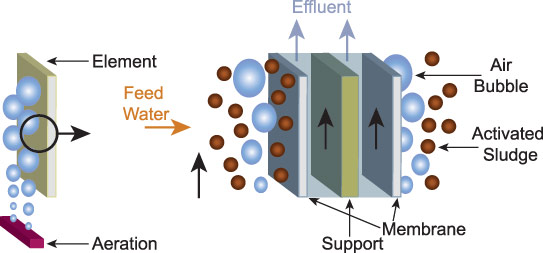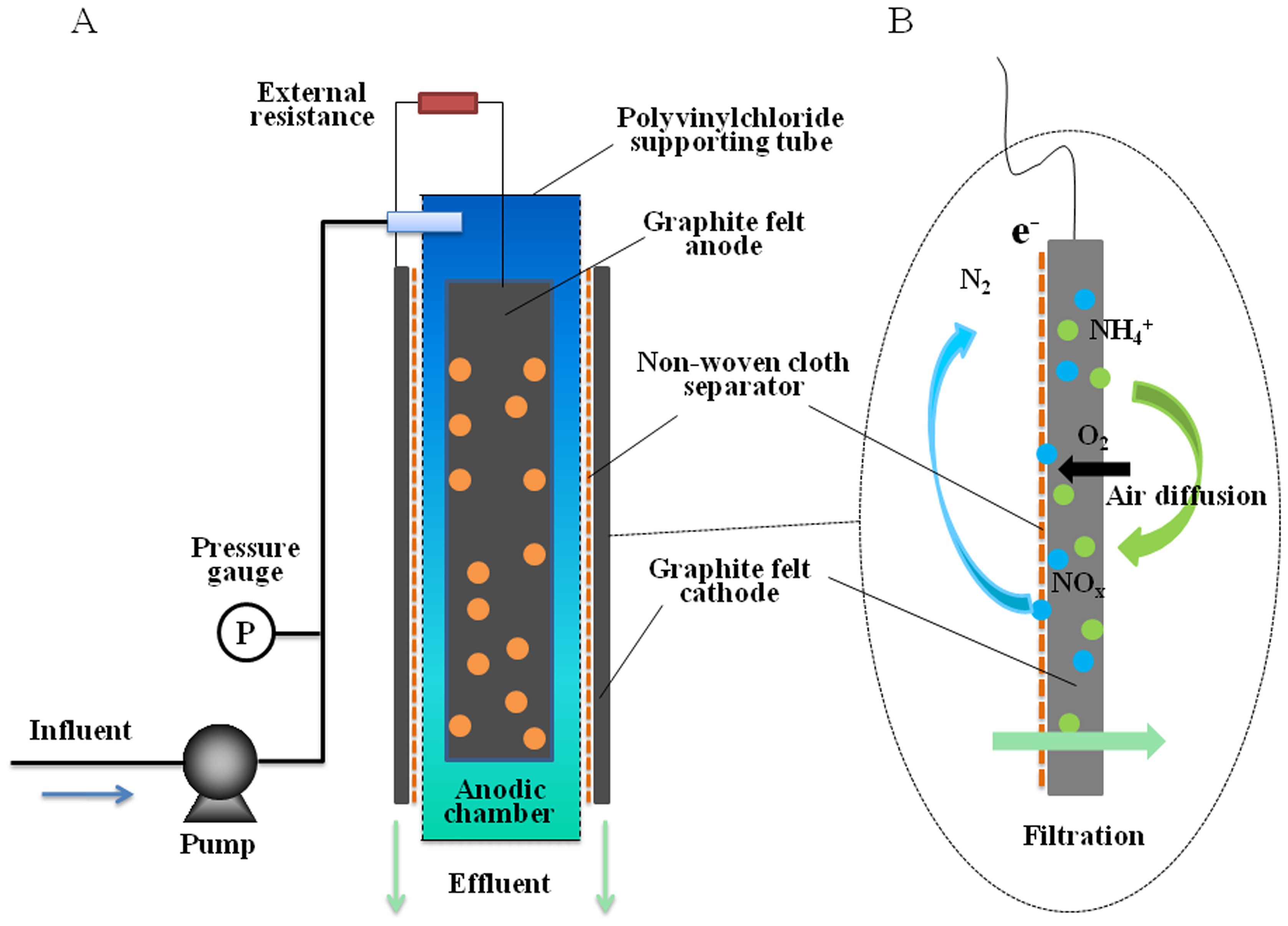Just How Membrane Layer Bioreactors Are Transforming Water Filtration Solutions
The emergence of membrane bioreactors (MBRs) represents a significant development in the field of water purification, merging biological therapy procedures with innovative membrane layer filtering innovations. As worldwide water shortage heightens, the function of MBRs in assisting in drinkable water reuse and sustainable water administration becomes increasingly crucial.
Overview of Membrane Layer Bioreactors
Membrane layer bioreactors (MBRs) stand for a considerable development in water purification modern technology, as they incorporate organic treatment processes with membrane layer filtering. This combination enhances the performance of wastewater therapy by using microorganisms to weaken natural contaminants while all at once employing semi-permeable membrane layers to separate treated water from put on hold pathogens and solids.
The MBR system typically is composed of a biological reactor where the microbial populace metabolizes contaminants, followed by a membrane layer filtration device that preserves biomass and enables only tidy water to pass through. This twin performance results in greater effluent quality contrasted to conventional therapy methods. MBRs can be run in both batch and continuous circulation modes, supplying versatility in layout and application.
They also allow the recuperation of water for reuse, hence contributing to water sustainability initiatives. In general, MBRs are at the center of boosting water therapy efficiency and high quality, showcasing the capacity for ingenious remedies in ecological monitoring.
Advantages of MBR Technology
The integration of biological treatment with membrane filtering uses many benefits for water filtration processes. One of the primary benefits of Membrane Bioreactor (MBR) technology is its ability to properly eliminate both natural and not natural pollutants, causing high-grade effluent. The membrane layers work as a physical obstacle, protecting against put on hold solids and microorganisms from passing through, which improves the general safety and reliability of cured water.
In addition, MBR systems call for a smaller sized footprint compared to conventional therapy techniques, enabling much more efficient space application. This small style is particularly advantageous in city setups where land is limited. MBRs additionally show operational flexibility, suiting varying influent qualities and circulation prices without significant efficiency deterioration.
Additionally, the procedure uses enhanced nutrient elimination abilities, particularly for nitrogen and phosphorus, which are critical for protecting against eutrophication in getting waters. The reduced sludge manufacturing associated with MBR modern technology likewise translates to reduce disposal costs, making it a cost-effective remedy in the long run - Membrane Bioreactor. Overall, the benefits of MBR technology setting it as a leading choice for sustainable and cutting-edge water purification systems, resolving both environmental and financial concerns
Applications in Water Filtration
Applications of Membrane Bioreactor (MBR) innovation in water filtration are impactful and varied, addressing different therapy needs throughout multiple markets. MBRs effectively integrate organic treatment processes with membrane layer filtration, making them suitable for municipal wastewater treatment, commercial effluent monitoring, and even drinkable water reuse campaigns.
In local setups, MBRs are significantly used to enhance the top quality of dealt with wastewater, permitting for conformity with stringent discharge regulations and helping with the recycling of water for irrigation and non-potable uses. Their small style likewise makes them appropriate for metropolitan atmospheres where room is restricted.
Industrially, MBR innovation is used to deal with process water and wastewater, specifically in markets such as food and beverage, drugs, and textiles. By successfully getting rid of impurities and put on hold solids, MBRs assist markets reduce environmental impacts while recovering valuable sources from wastewater streams.
In Addition, MBRs are obtaining grip in decentralized water treatment applications, where small-scale systems can be deployed in remote locations or creating regions. This adaptability enables areas to attain lasting water administration solutions, boosting accessibility to clean water while decreasing reliance on typical therapy techniques.
Case Researches and Success Stories

In another instance, a textile production facility in Bangladesh took on MBR innovation to resolve its wastewater difficulties. The system reduced chemical oxygen demand (COD) degrees from 1,200 mg/L to less than 100 mg/L, therefore meeting governing standards Our site and significantly lessening environmental effect.
The College of Cape Town's MBR installment has confirmed effective in dealing with greywater for non-potable reuse on campus. This job not just saves drinkable water yet likewise acts as an educational design for lasting practices.
In addition, a seafood processing plant in Norway made use of MBR technology to treat effluents having high levels of raw material, accomplishing over 90% toxin removal. These study emphasize MBR technology's adaptability and its essential role in improving water top quality throughout diverse applications.
Future of Water Treatment Solutions
As worldwide water shortage and air pollution challenges heighten, ingenious water therapy remedies are becoming increasingly important to make certain lasting accessibility to clean water. The future of water treatment hinges on the integration of advanced innovations that improve the effectiveness and efficiency of filtration procedures. Membrane layer bioreactors (MBRs) go to the leading edge of this advancement, incorporating organic therapy with membrane layer filtering to generate high-quality effluent suitable for get more various applications.

Emerging trends such as resource recuperation from wastewater, consisting of nutrients and power, will further transform therapy facilities into eco-friendly centers. In addition, improvements in nanotechnology and membrane materials assure boosted performance and longevity of purification systems.

Verdict
To conclude, membrane bioreactors stand for a significant innovation in water purification technologies, successfully combining organic treatment with innovative membrane purification. The various benefits, including boosted effluent quality and lowered spatial needs, make MBRs specifically suitable for metropolitan applications. Their role in drinkable water reuse and lasting water administration highlights their relevance in dealing with international water scarcity difficulties. Proceeded research study and growth will even more boost the efficacy and fostering of MBR modern technology, guaranteeing a resistant future for water therapy services.
The development of membrane bioreactors (MBRs) stands for a substantial advancement in the field of water filtration, combining organic therapy processes with innovative membrane layer purification technologies. As global water shortage intensifies, the role of MBRs in helping with potable water reuse and sustainable water management becomes increasingly vital. They likewise allow the healing of water for more information reuse, therefore contributing to water sustainability efforts.As worldwide water scarcity and pollution challenges intensify, innovative water therapy remedies are coming to be progressively vital to guarantee lasting accessibility to clean water. Their role in safe and clean water reuse and lasting water administration highlights their significance in addressing international water deficiency difficulties.